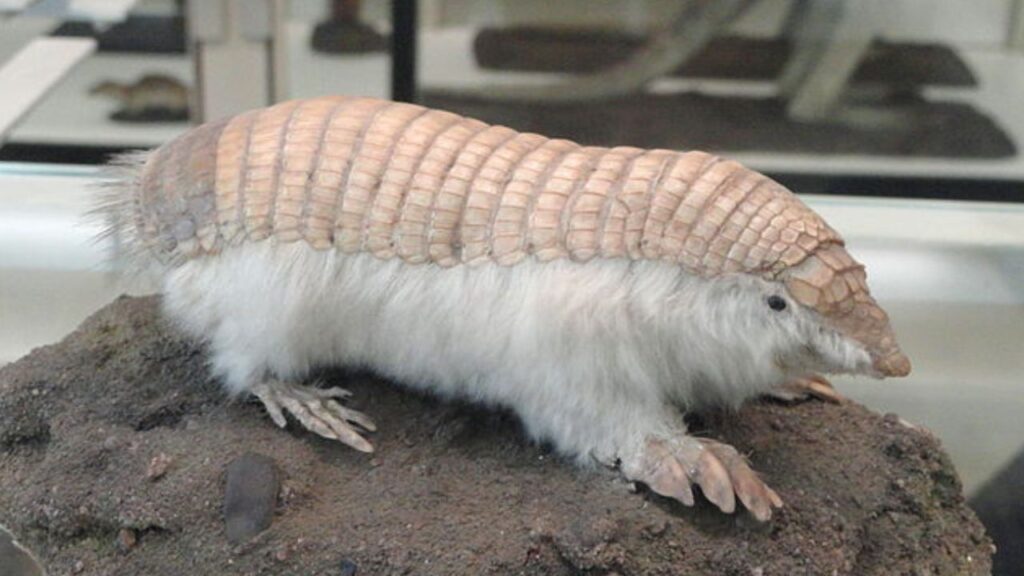The animal kingdom is vast and diverse, filled with fascinating species that many of us are yet to discover. Delving into the world of rare and exotic animals can be a thrilling journey, uncovering creatures that defy imagination. This article explores 20 such animals, each unique and intriguing in its own right. Get ready to be amazed by the wonders of nature, showcasing the lesser-known yet equally captivating side of wildlife.
1. Okapi
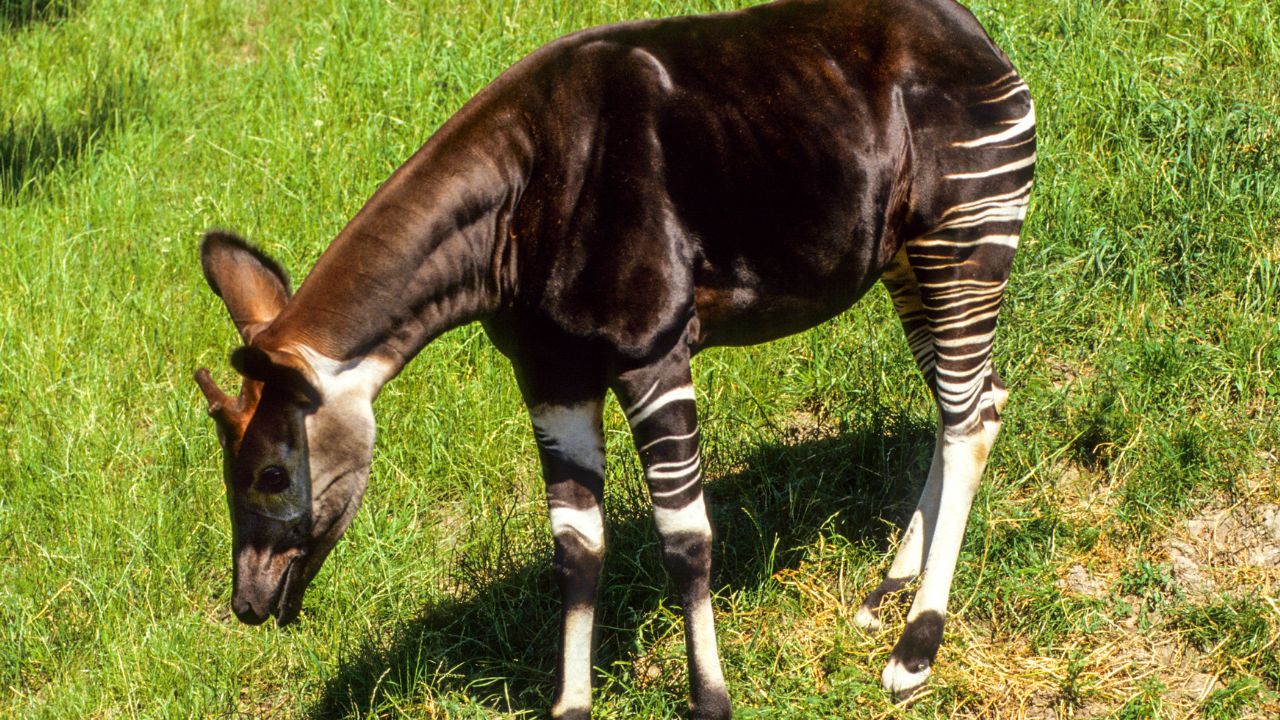
The Okapi, a unique and mysterious mammal, is indigenous to the Ituri Rainforest in the Democratic Republic of Congo. Resembling a cross between a zebra and a giraffe, the okapi has distinctive zebra-like stripes on its legs, complemented by a long, giraffe-like neck. Despite its zebra stripes, it is indeed the giraffe’s closest relative. This solitary and secretive animal is primarily diurnal, spending most of its day foraging in the dense rainforest. The okapi’s elusive nature and unique appearance make it a symbol of the rich biodiversity found in the Congo’s rainforests.
2. Saiga Antelope

The Saiga Antelope, roaming the Eurasian steppes, is known for its peculiar, oversized nose, an adaptation to filter dust and regulate the temperature of the air it breathes. This critically endangered species has faced numerous threats, including poaching for its horns and habitat destruction. The saiga’s distinct nose is not just a unique physical trait but also plays a crucial role in its survival in the extreme climates of the steppes, making it a fascinating subject of ecological adaptation.
3. Aye-Aye
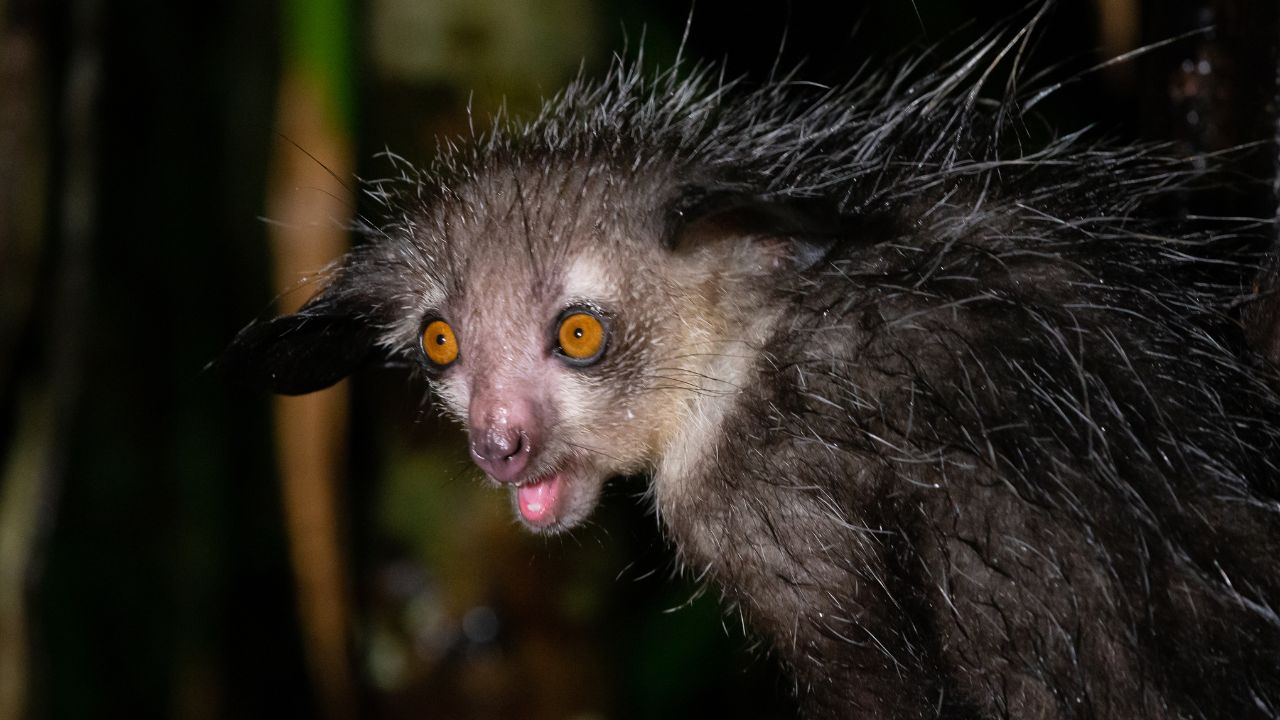
The Aye-Aye, a unique species of lemur found only in Madagascar, exhibits a specialized form of foraging known as percussive foraging. It uses its elongated middle finger to tap on trees, detecting grubs hidden beneath the bark. This nocturnal animal, with its large, sensitive ears and rodent-like teeth, is often misunderstood and surrounded by local myths and superstitions. The aye-aye’s unusual appearance and rare foraging behavior make it one of Madagascar’s most enigmatic and fascinating creatures.
4. Tufted Deer
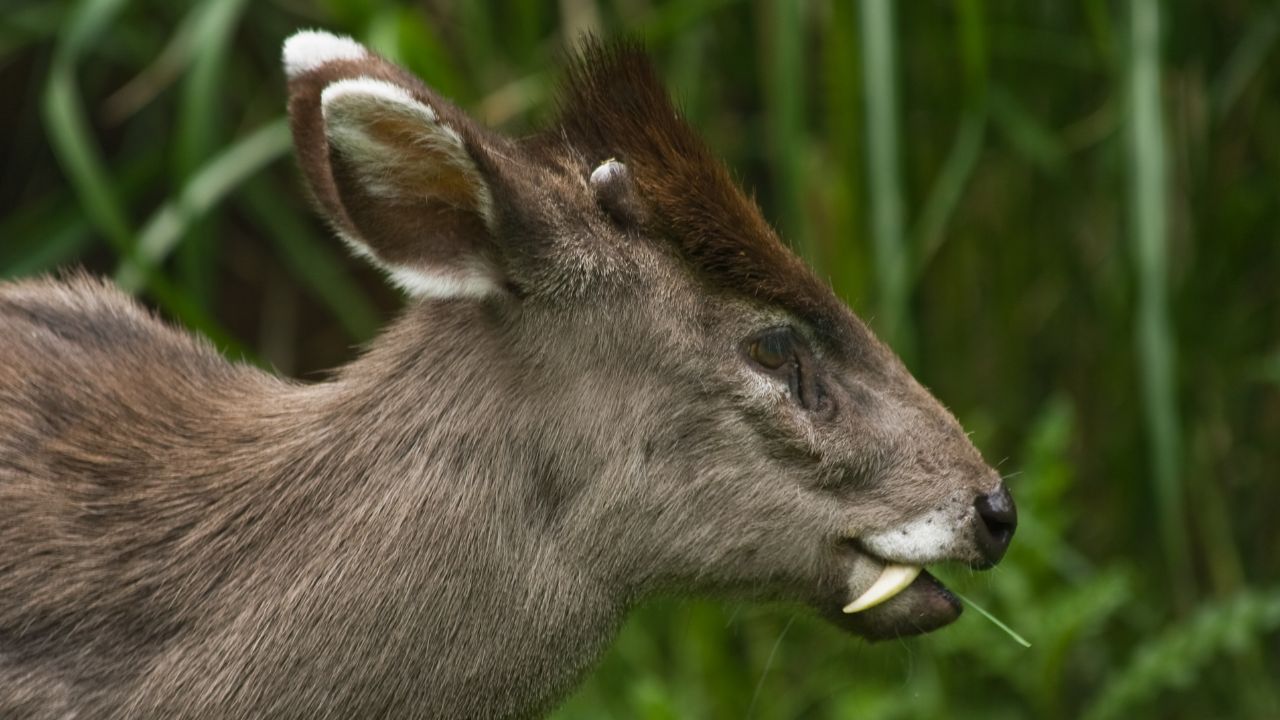
The Tufted Deer is a small and elusive deer species native to the high-altitude forests of central China. Its most striking features include a prominent tuft of black hair on its forehead and the males’ unusual fang-like canines, which protrude from the mouth. These deer are typically shy, preferring solitude and coming out mostly during twilight. Their secretive nature, combined with their distinctive physical characteristics, makes the tufted deer a unique and intriguing mammal.
5. Pink Fairy Armadillo
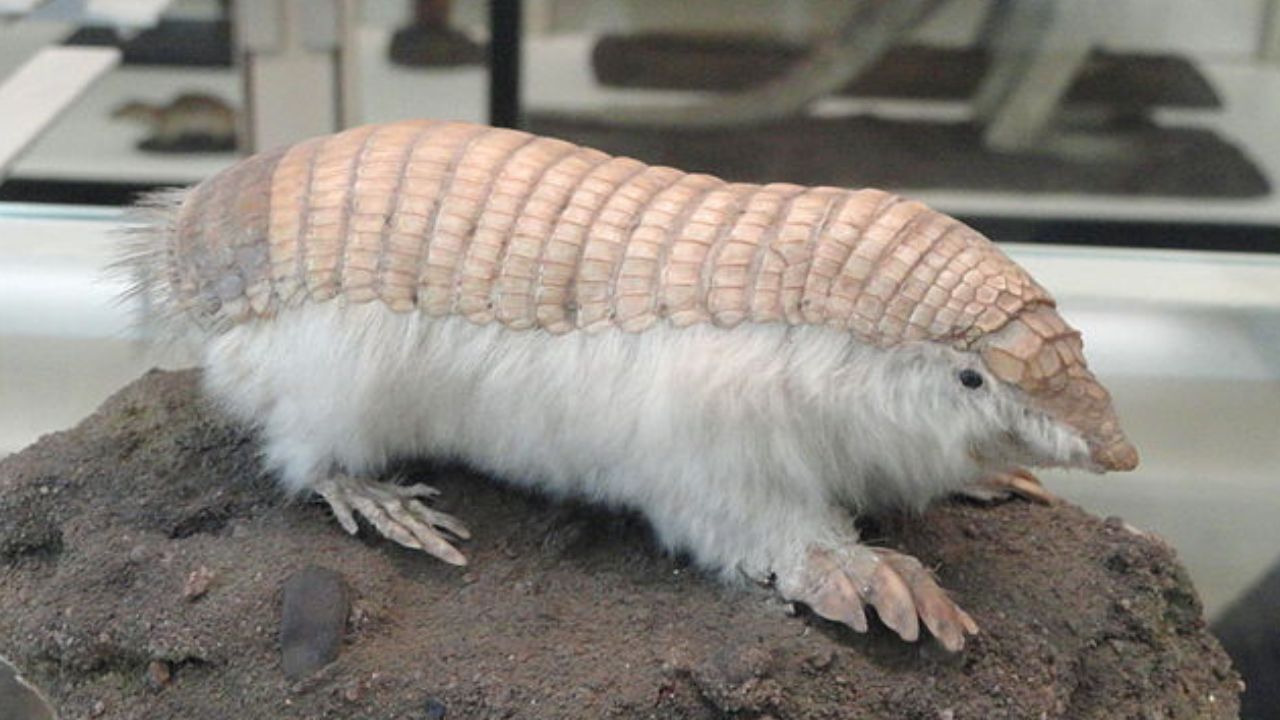
The Pink Fairy Armadillo, endemic to the sandy and dry grasslands of central Argentina, holds the title of the smallest armadillo species. This nocturnal animal is characterized by its soft, pinkish dorsal shell and diminutive size. It spends much of its life burrowing underground, which, coupled with its elusive nature, makes sightings of this armadillo a rare occurrence. The pink fairy armadillo’s unique adaptations for a subterranean lifestyle highlight the diversity of survival strategies in the animal kingdom.
6. Maned Wolf

The Maned Wolf, native to the grasslands of South America, stands out for its unique appearance, resembling a cross between a fox and a wolf. However, it is a distinct species with notably long, stilt-like legs adapted to navigate the tall grasses of its habitat. These wolves are solitary creatures, primarily active at dusk and dawn, and their diet mainly consists of small animals, birds, and even fruits. Despite their name, they are not part of the wolf family but belong to a separate genus altogether, adding to their uniqueness.
7. Markhor
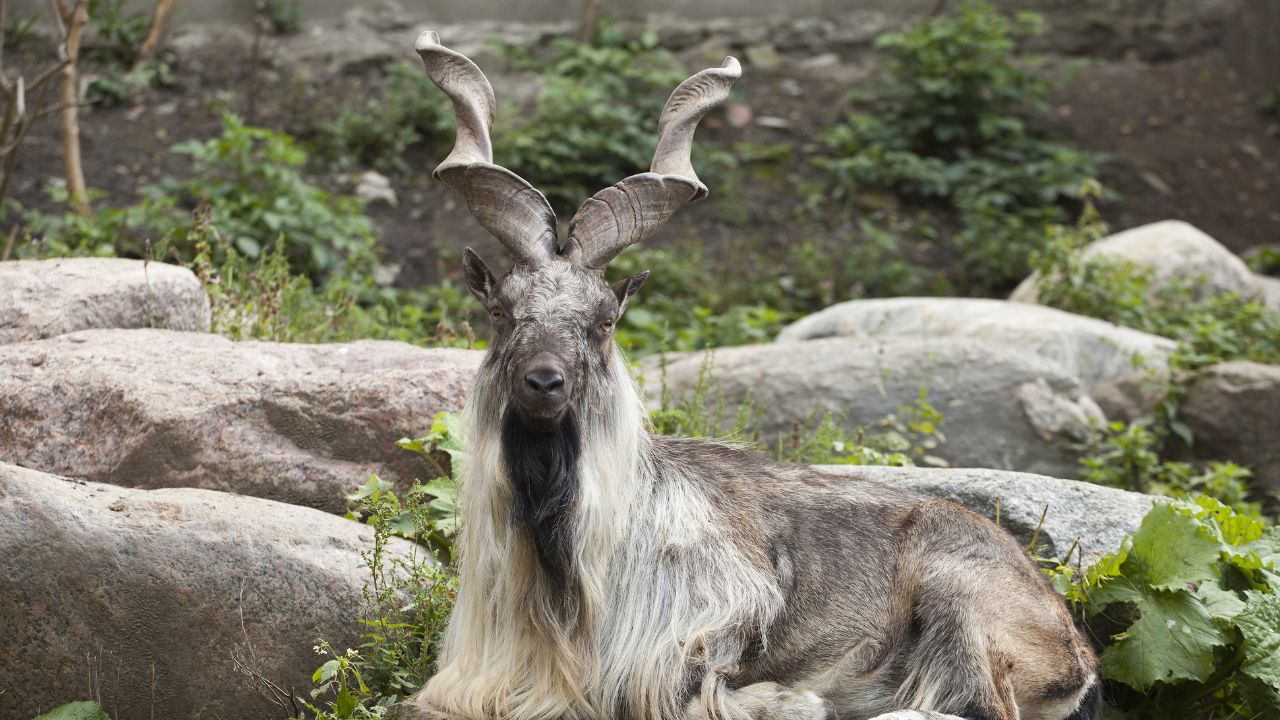
The Markhor, a wild goat species found in the mountainous regions of Central Asia, is renowned for its majestic, spiraled horns, which in males can grow up to four feet long. This species is Pakistan’s national animal and is revered in local cultures. The Markhor has adapted to the rugged terrain of the mountains, but it has faced significant threats from excessive hunting and habitat loss. Conservation efforts have been instrumental in preserving this magnificent species, known for its climbing prowess and impressive horns.
8. Patagonian Mara
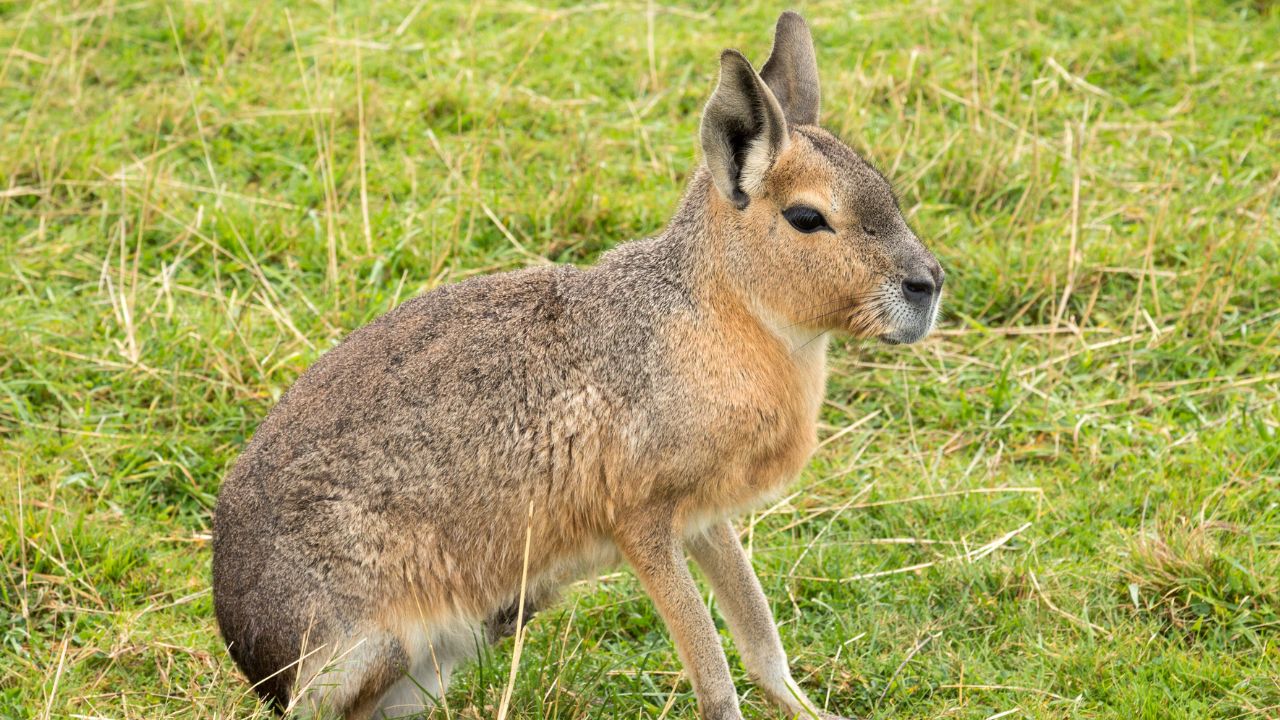
The Patagonian Mara, native to Argentina, is a large, unusual-looking rodent, bearing similarities to both rabbits and small deer. It is distinguished by its long limbs, which aid in its agile movement, and hare-like ears. Unique among rodents, Patagonian Maras are known for their monogamous pairings and intriguing social behavior, which includes communal rearing of their young. These creatures are a fascinating study in social structures among rodents and are adapted to life in the open, arid landscapes of Patagonia.
9. Fossa

The Fossa, an enigmatic carnivore from Madagascar, is an apex predator on the island. With its cat-like body, dog-like muzzle, and mongoose-like agility, it is a unique species that reigns at the top of Madagascar’s food chain. The fossa is especially known for its hunting skills, preying primarily on lemurs. Its status as the largest carnivorous mammal on the island, coupled with its climbing skills and solitary nature, makes the fossa one of Madagascar’s most captivating and elusive animals.
10. Gerenuk
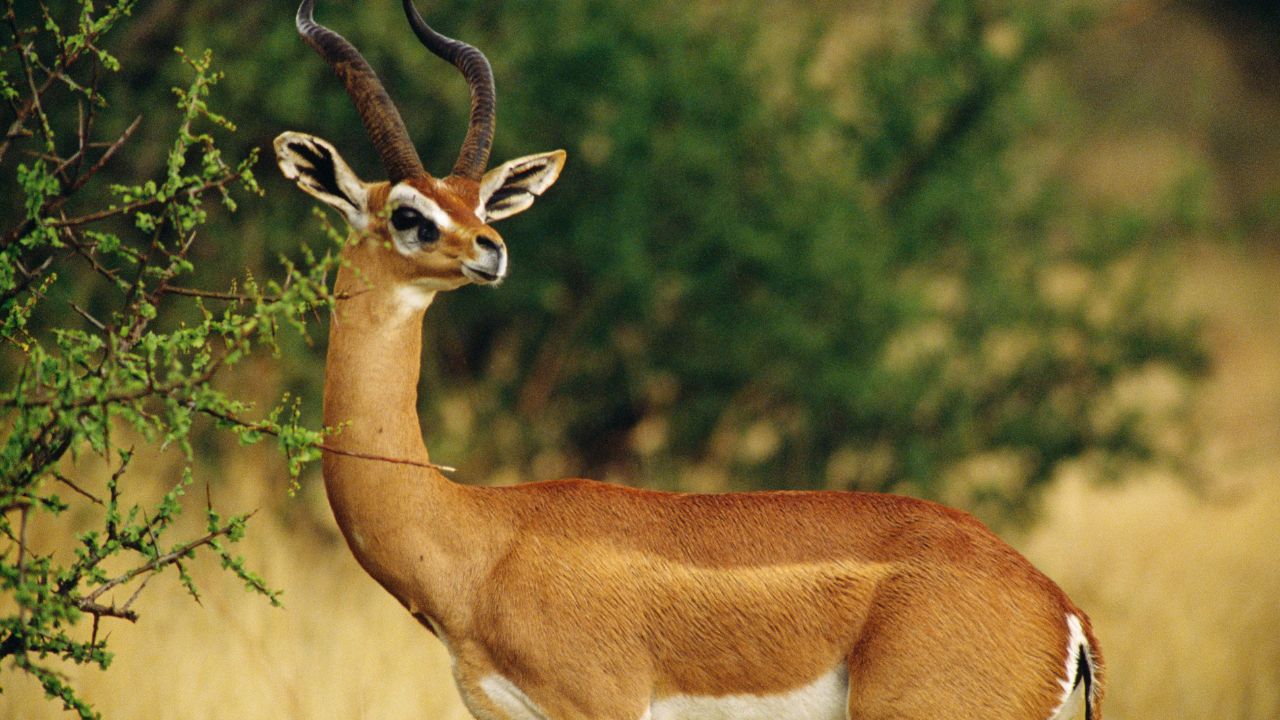
The Gerenuk, often referred to as the ‘giraffe gazelle’ due to its elongated neck, is a striking antelope native to East Africa. This unique species has adapted to feed on foliage beyond the reach of other antelopes by standing on its hind legs, a behavior rarely seen in other hoofed animals. With its slender build and graceful posture, the gerenuk is an extraordinary example of evolutionary adaptation, allowing it to exploit food sources inaccessible to other grazers in its arid habitat.
11. Dugong

The Dugong, often affectionately referred to as a ‘sea cow,’ is a serene marine mammal found in the warm coastal waters stretching from East Africa to Australia. These gentle giants are primarily herbivores, feeding on vast beds of seagrass, which plays a crucial role in their ecosystem. Dugongs are known for their slow and graceful swimming, using their fluked tail to propel through the water. Their peaceful nature and distinctive body shape, resembling a large, grey, and whiskered torpedo, make them a unique and fascinating species within the marine mammal community.
12. Red Panda
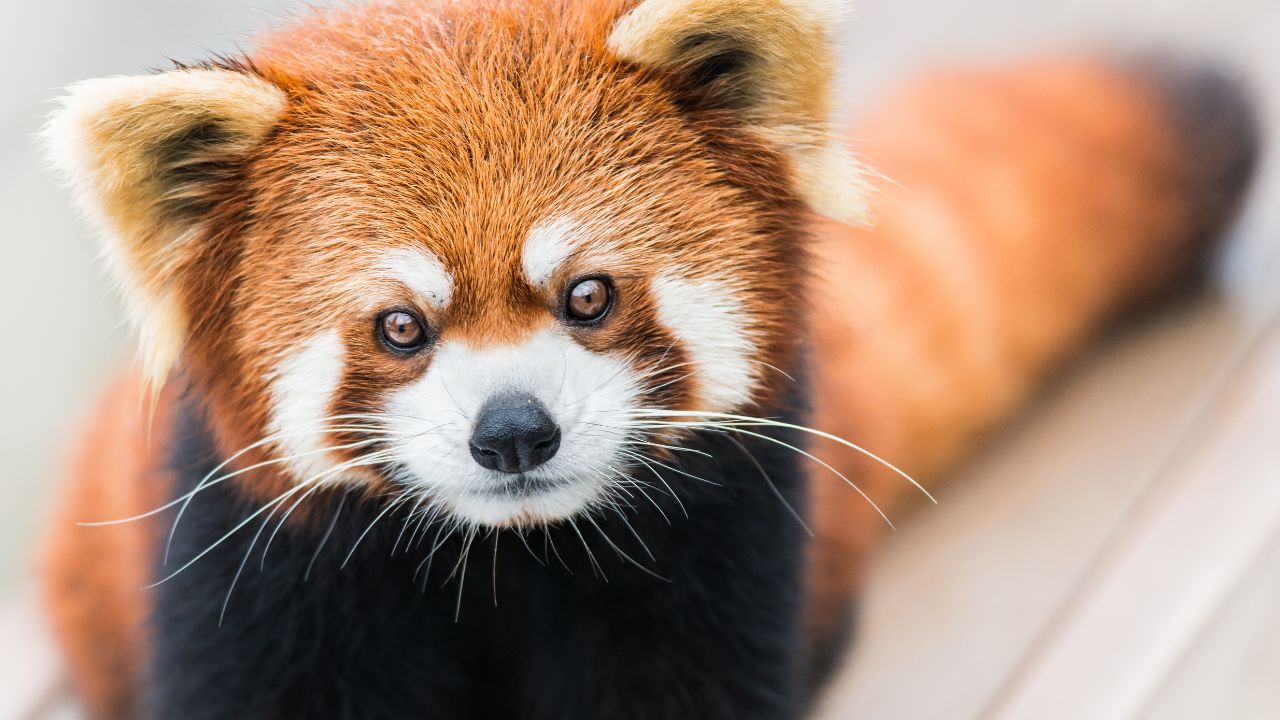
The Red Panda, a small and enchanting mammal, resides in the temperate forests of the eastern Himalayas and southwestern China. With its distinct reddish-brown fur, bushy ringed tail, and adorable face, the red panda spends much of its time in trees. This arboreal creature primarily feeds on bamboo, but it also enjoys fruits, acorns, and eggs. Despite its name, the red panda is not closely related to the giant panda and is the only living member of its own taxonomic family, Ailuridae.
13. Sun Bear
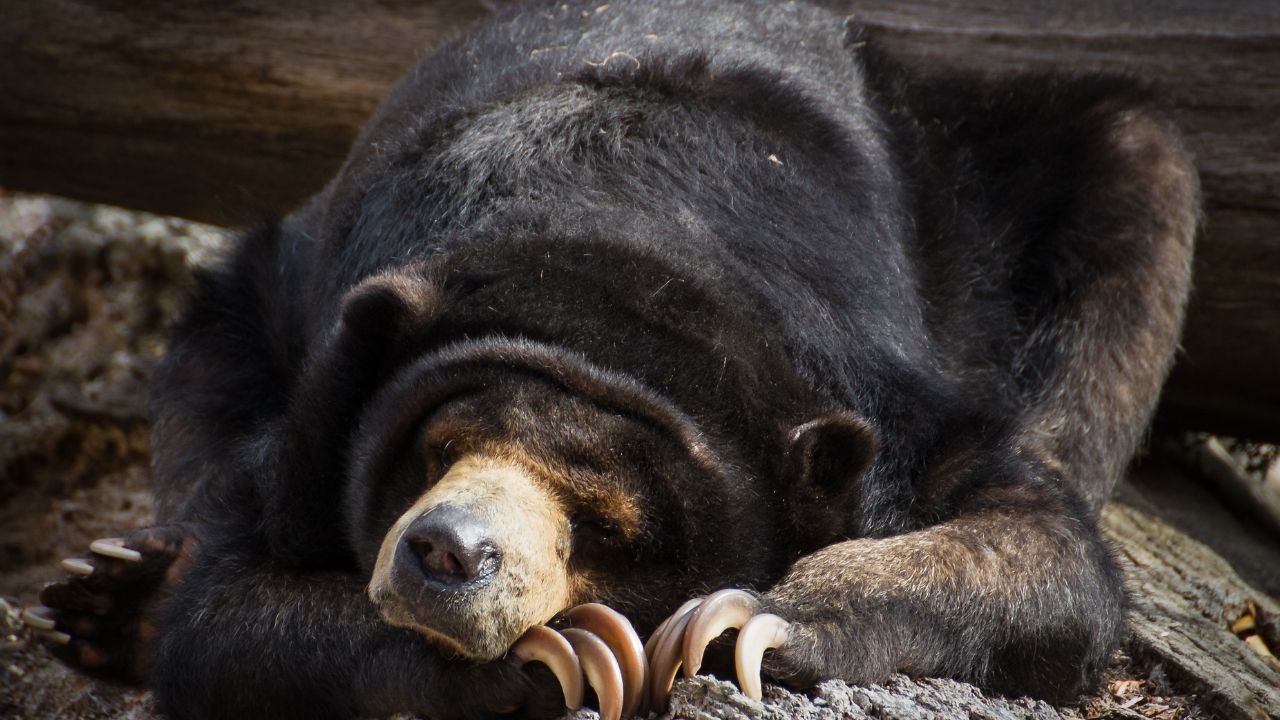
The Sun Bear, native to the tropical forests of Southeast Asia, is recognized as the smallest member of the bear family. This bear is easily distinguishable by its sleek black fur and a striking orange or cream-colored patch on its chest, which resembles the rising sun. Sun bears are adept climbers, using their strong claws to ascend trees in search of honey and insects. Their exceptionally long tongue, measuring up to 8 inches, is perfectly adapted for extracting honey from beehives, earning them the nickname ‘honey bear.’
14. Proboscis Monkey
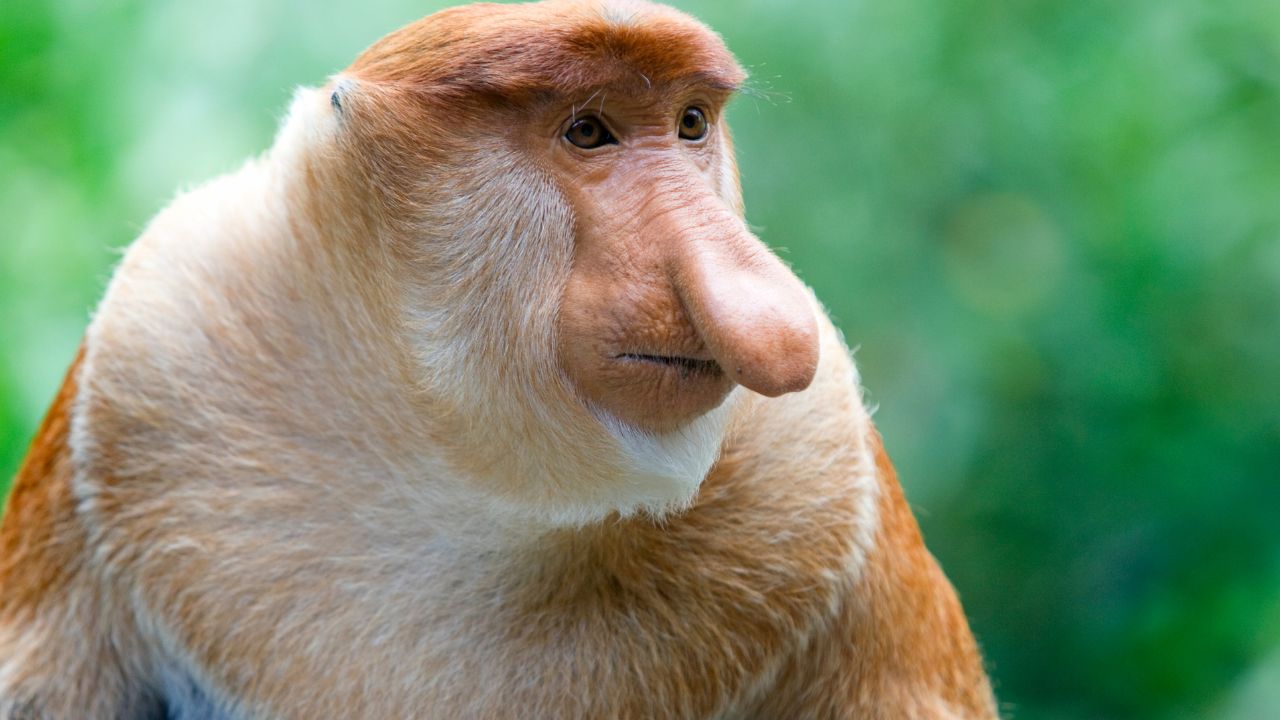
The Proboscis Monkey, indigenous to Borneo, is renowned for its distinctive large, bulbous nose, particularly pronounced in males. This unique feature is thought to be an attractive trait to females and plays a role in amplifying the monkey’s vocalizations. These monkeys are also noted for their excellent swimming abilities, aided by their partially webbed feet, making them adept at navigating Borneo’s riverine environments. They typically live in organized groups and are often found in mangrove forests and coastal areas, where they feed on a diet of leaves, fruits, and seeds.
15. Tarsier
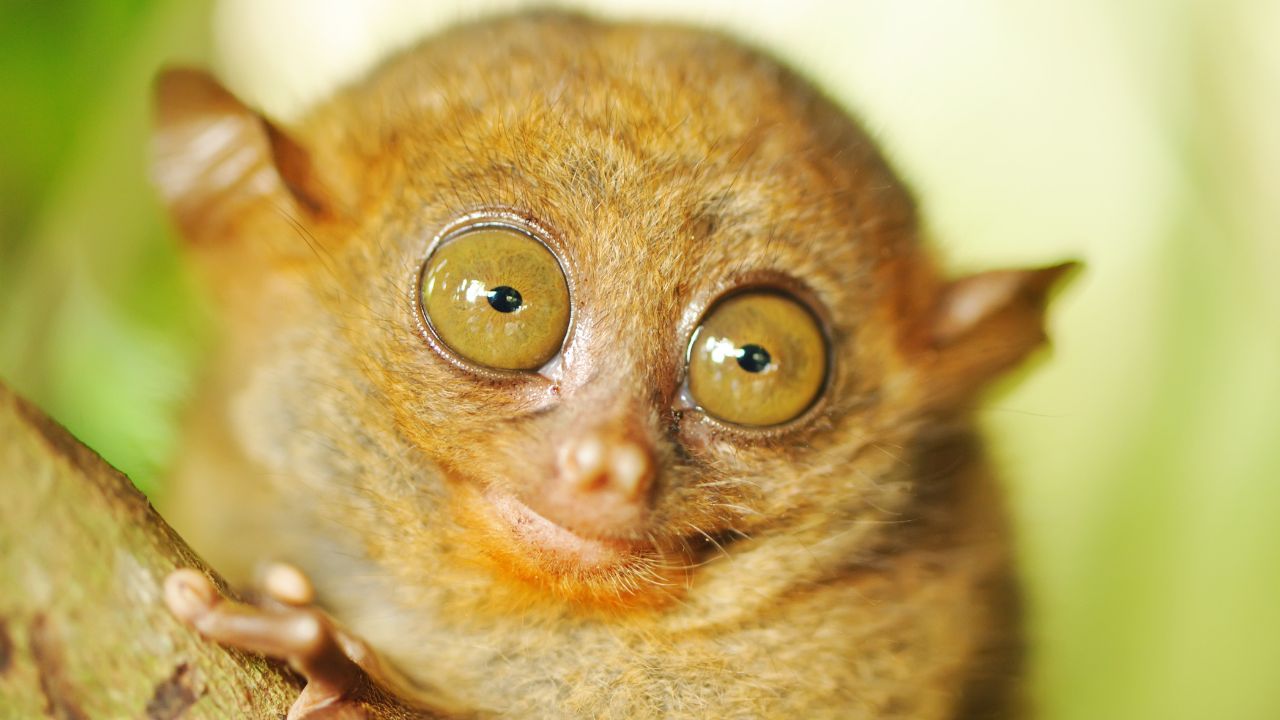
Tarsiers, tiny primates found in the forests of Southeast Asia, are most notable for their enormous, forward-facing eyes, each as large as their brain. These nocturnal creatures are among the smallest primates in the world. Their large eyes provide them excellent night vision, essential for spotting prey and navigating the forest at night. Tarsiers are also remarkable jumpers, capable of leaping over 40 times their body length between trees. Their elongated hind limbs and fingers aid in gripping branches, making them agile and proficient in their arboreal lifestyle.
16. Sunda Colugo
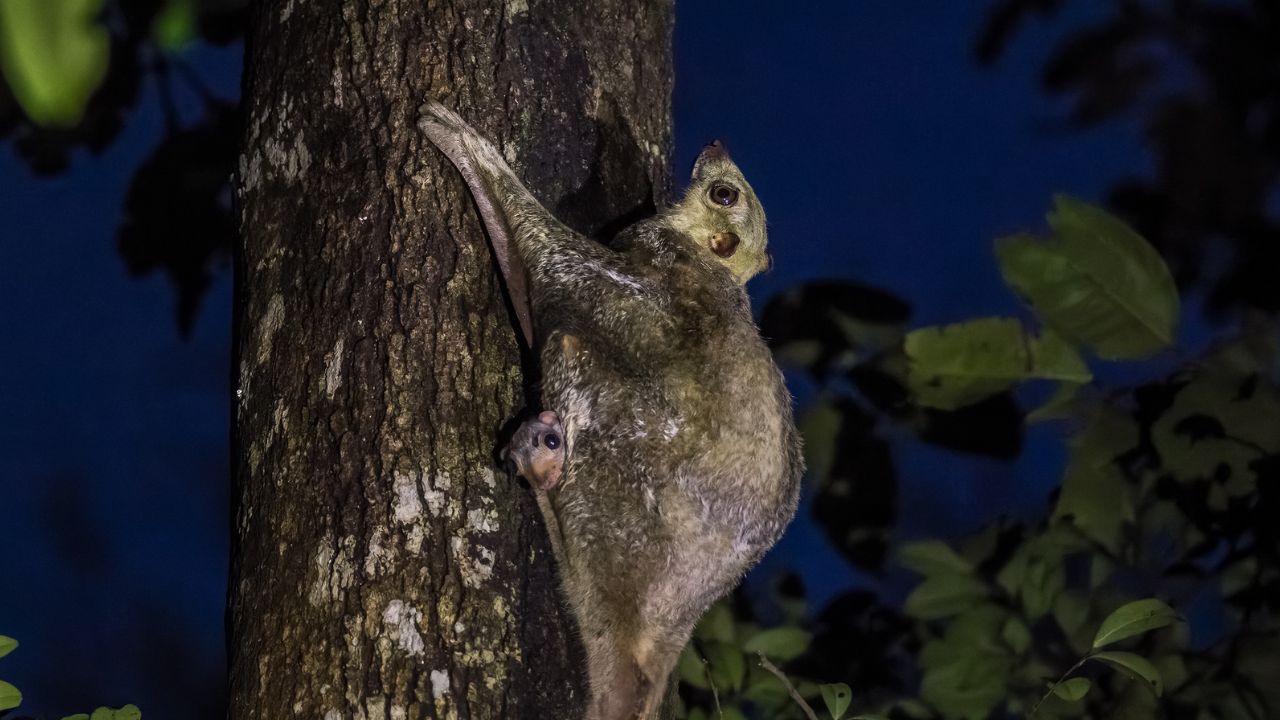
The Sunda Colugo, also known as the Sunda flying lemur, is a fascinating creature native to Southeast Asia. Despite its name, it neither flies nor is it a lemur. Instead, this animal is a master glider, utilizing a large skin membrane that stretches between its limbs to glide effortlessly from tree to tree. The Sunda Colugo is a nocturnal species, feeding primarily on soft plant parts like fruits and leaves. Its ability to glide over considerable distances makes it a unique and intriguing species in the animal kingdom.
17. Narwhal

The Narwhal, often dubbed the ‘unicorn of the sea,’ is a remarkable whale species found in the frigid waters of the Arctic. Its most striking feature is the long, spiral tusk protruding from its head, which is actually an elongated upper left canine tooth. These medium-sized cetaceans are shrouded in mystery, with much of their life and habits still unknown. The narwhal’s tusk has fascinated scientists and the public alike, contributing to numerous myths and legends about this elusive marine mammal.
18. Axolotl

The Axolotl, a unique aquatic salamander native to Mexico, is renowned for its remarkable regenerative abilities, including the capacity to regrow entire limbs. This species is also notable for its retention of larval features throughout its life, a condition known as neoteny. The axolotl’s perpetual juvenile state, characterized by its feathery external gills and wide, endearing smile, makes it an extraordinary subject in the study of evolutionary biology and regenerative medicine.
19. Kakapo
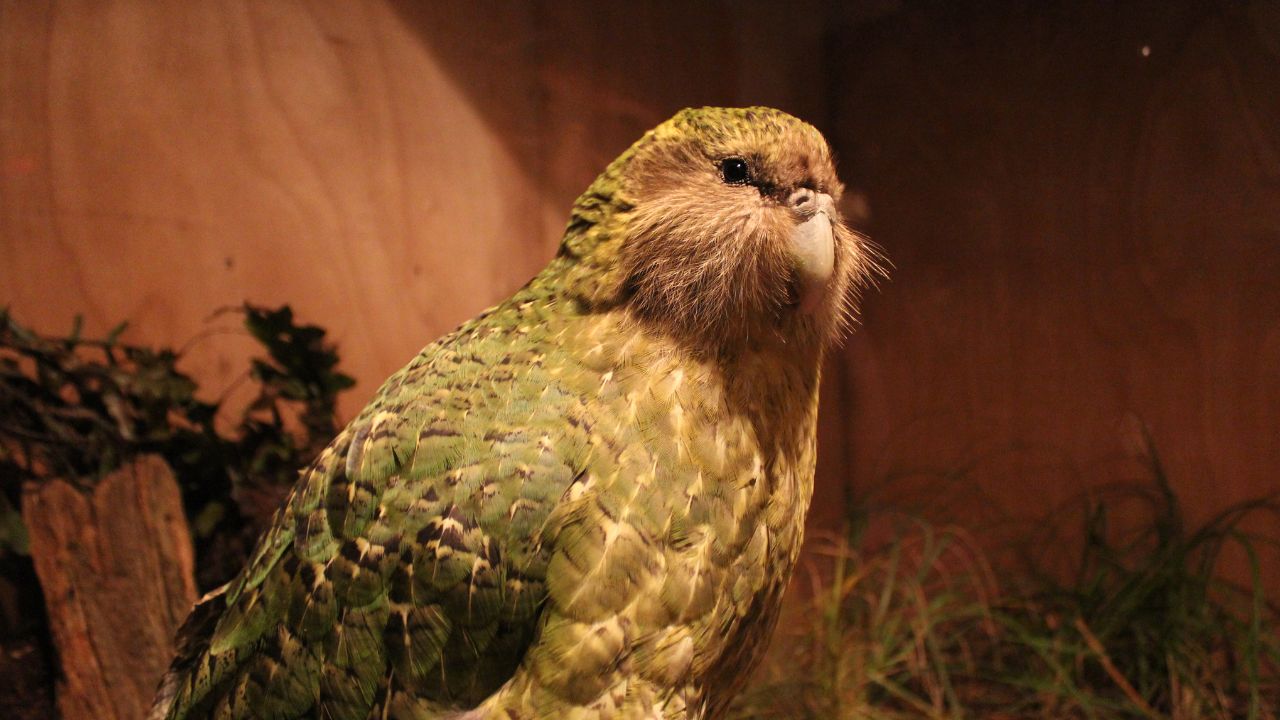
The Kakapo is a highly distinctive bird, being the only flightless parrot in the world. Native to New Zealand, this nocturnal and ground-dwelling bird is known for its hefty build, making it the world’s heaviest parrot. The Kakapo emits a strong, sweet fragrance and is known for its friendly and curious nature. However, these traits have contributed to its vulnerability and critically endangered status, as they made the Kakapo an easy target for predators introduced by humans.
Becky is a fervent wildlife enthusiast and pet care expert with a diploma in canine nutrition. Her love for animals stretches beyond the domestic, embracing the wild tapestry of global fauna. With over a decade of experience in animal welfare, Becky lends her expertise to OutlandishOwl through insightful articles, captivating wildlife information, and invaluable guidance on pet nutrition. Her work embodies a deep commitment to understanding the intricate lives of animals and a passion for educating others on sustaining natural habitats. Becky's hands-on conservation efforts and her knack for translating complex dietary science into practical pet feeding tips make her an indispensable voice for creatures great and small.

